What is a coral? |
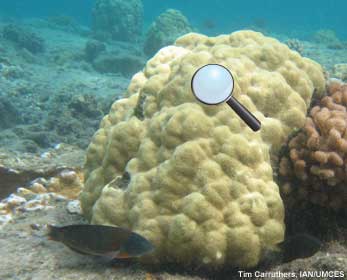
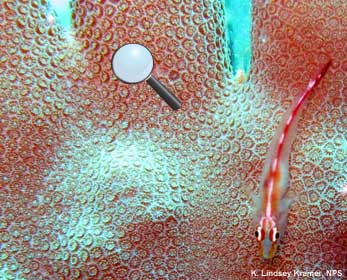
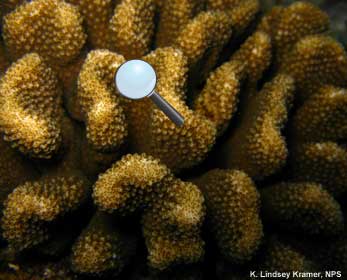
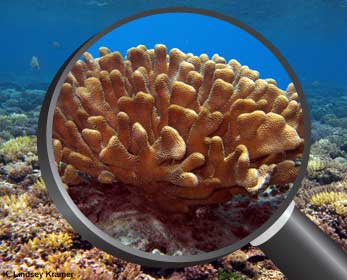
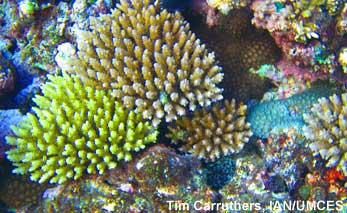 Are corals plants, animals, or rocks?
Are corals plants, animals, or rocks?
Well, corals are animals. However, corals make a calcium carbonate skeleton that looks similar to a rock and have a symbiotic relationship with plant-like cells called zooxanthellae.
The zooxanthellae living in the soft tissue of a coral polyp use sunlight to produce food through photosynthesis and create a byproduct that the coral can use as food. Thus, zooxanthellae provide corals with food; in return, the coral provides the zooxanthellae with shelter and nutrients.
Corals also capture food. At night, they stretch out their stinging tentacles and catch the microscopic organisms that float in the water and digest them in their stomachs. So, corals have two ways of getting food—through zooxanthellae and capturing microscopic organisms.
Where do corals live?
Corals grow in warm shallow waters that receive plenty of light. Thus, there are many places in the Pacific Ocean where corals can live, but corals can also be found around the world including the Indian Ocean, Caribbean Sea, Red Sea, and Arabian Gulf, and in places influenced by warm currents such as the Florida coast.
A few species can tolerate cooler and deeper waters; however, most coral species live in waters close to the warmest temperature they can tolerate (about 85° F or 29° C). This means that slight increases in ocean temperature can harm corals. Already climate change and the warmer ocean waters associated with it have decreased the health of corals and triggered bleaching events in certain areas. As climate change continues, corals will be placed under more stress.
How do hard corals build skeletons and reefs?
For protection and support, hard corals build skeletons made of calcium carbonate. To do this, a coral polyp secretes layer upon layer of calcium carbonate underneath its body. As time goes by, the skeleton grows larger and larger, and the polyp lives on its outside edge. As long as a polyp can get the right building material from the water, it can build a strong skeleton. Explore an interactive coral polyp.
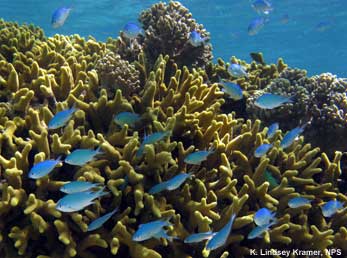
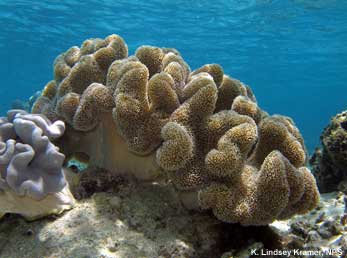
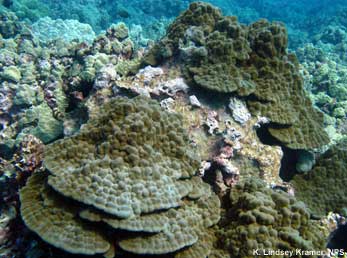 Hard corals are often called the reef builders because their skeletons provide support for other corals and other organisms. Soft corals do not build calcium carbonate skeletons. Instead they have spines that support them. They are not considered reef-builders.
Hard corals are often called the reef builders because their skeletons provide support for other corals and other organisms. Soft corals do not build calcium carbonate skeletons. Instead they have spines that support them. They are not considered reef-builders.
When hundreds or thousands of coral polyps build their skeletons close together, they create a calcium carbonate structure that provides habitat and food for a variety of organisms. This is known as a coral reef. Explore a virtual coral reef.
| HÄnau ka po HÄnau Kumulipo i ka po, he kane HÄnau Po`ele i ka po, he wahine HÄnau ka `Uku-ko`ako`a, hÄnau kana, he `Ako`ako`a, puka — From the Kumulipo | The night gave birth Born was Kumulipo in the night, a male Born was Po`ele in the night, a female Born was the coral polyp, born was the coral, came forth. The Kumulipo, the Hawaiian creation chant, indicates that the coral is one of the most basic and important life forms. Hawaiians believed that the coral polyp was the first organism created and all other life followed, based on this chant. |





